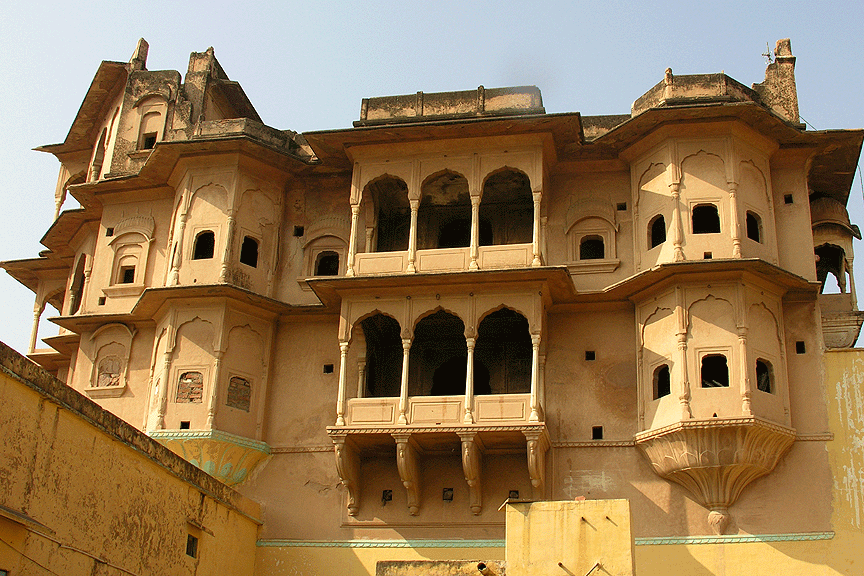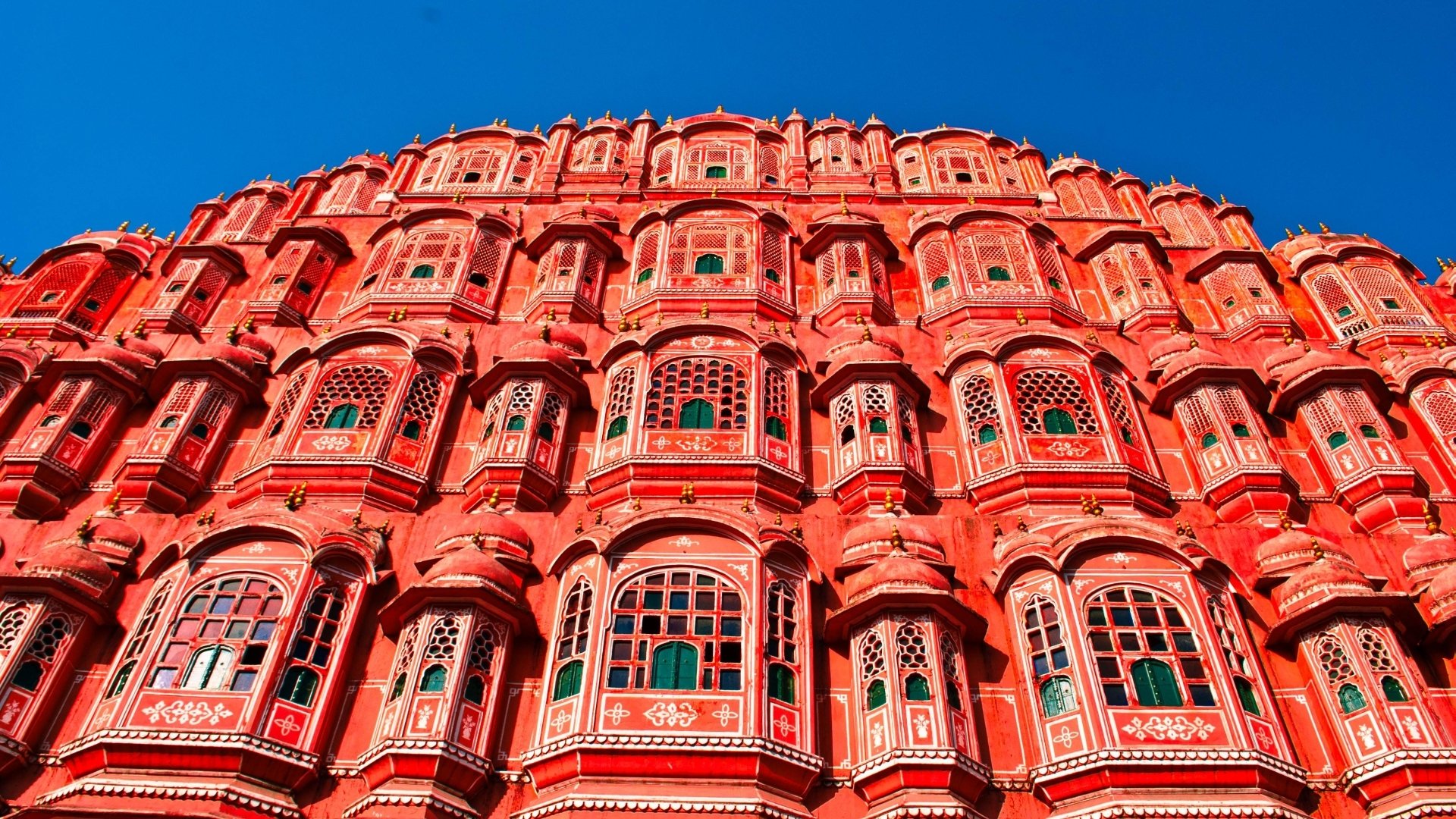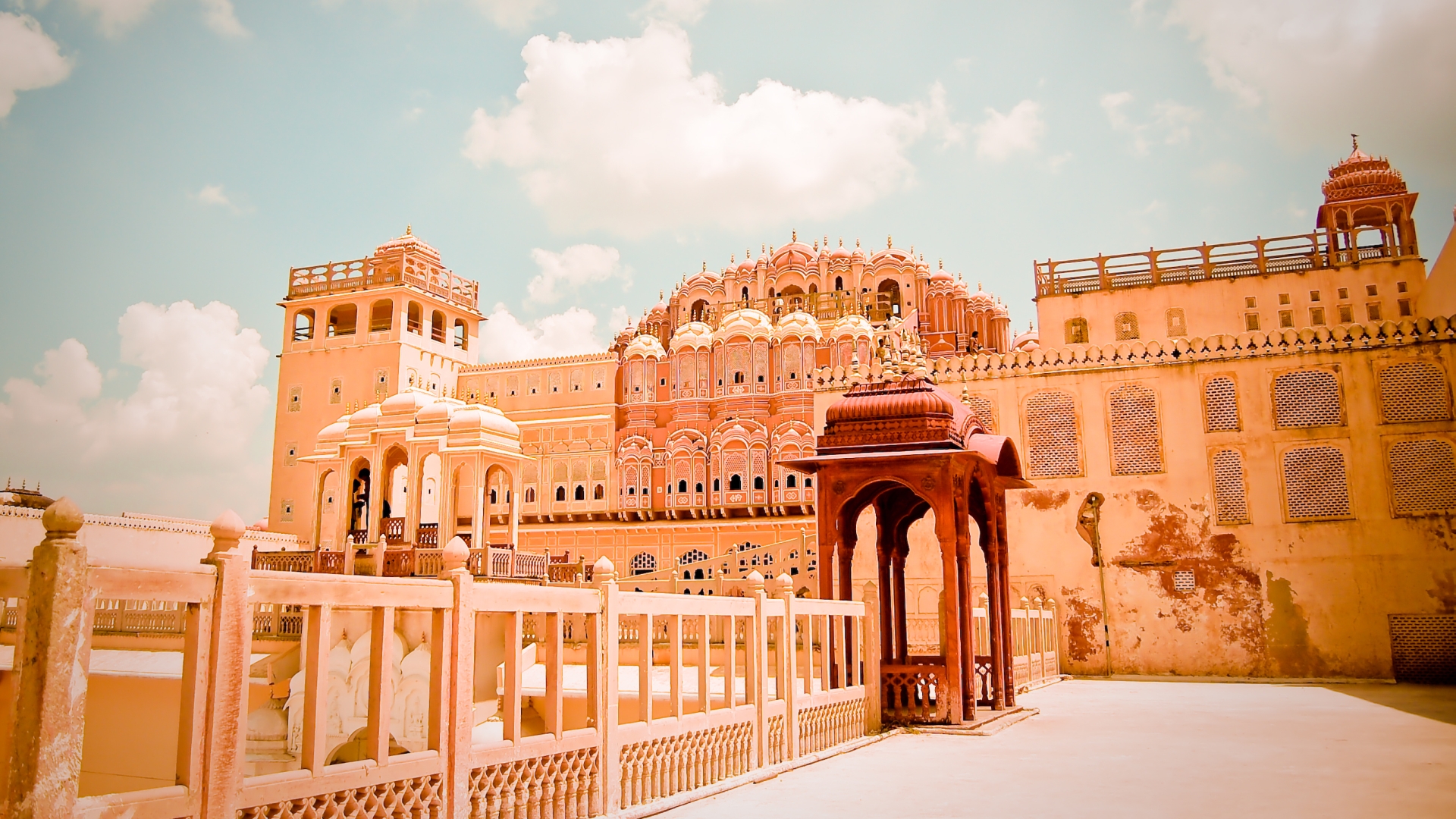Vibing on the tunes of ‘Padharo Mhare Desh’, relishing some delicious Dal-bati churma, overlooking some of the most gorgeous palaces around! Welcome to the capital and the largest city of Rajasthan – Jaipur, better known as the ‘Pink City‘. The city attracts a lot of tourist attraction owing to the beautiful palaces and monuments around.
The Hawa Mahal- a historical and architectural marvel, is the most important tourist spot in the city. It not only is a source of tourist interest but also has a lot of historical value attached. The Palace is popularly called “The Palace of Winds” or “The Palace of Breeze”. Overlooking the Sireh Deori Bazaar, the palace is located in the Badi Choupad.
The glorious Hawa Mahal
The Construction Story

Khetri Mahal- the source of inspiration of Hawa Mahal
It is believed that Maharaj Sawai Pratap, the founder of Jaipur was immensely impressed by the structure of the Khetri Mahal of Jhunjhunu, Rajasthan. So, he decided to get a similar one constructed for himself in the year 1799. The beautiful palace was constructed as an extension to the Royal City Palace and extended to the Zenana, or the women’s chambers. He built the palace with utmost royalty. It is said that the king’s grandfather, Maharaja Jai Singh was so mesmerized and impressed by the elegance of the Mahal that it became his favourite resort. Thus, the palace was also known as the ‘chef-d’œuvre’ of Maharaja Jai Singh.
Structure
The palace is a pyramidal five-storeyed monument, made of pink and red sandstone with a height of about 50 feet. It was designed by Lal Chand Ustad. The monument is a fusion of the Rajput, Islamic, and Mughal styles. As seen from the street, the palace is like a honeycomb structure with 953 windows known as ‘Jharukhas’. They are decorated with intricate latticework.

Jharukhas of the mahal
The top three floors of the structure have the width of a single room, while the first and second floors have patios in front of them. Each jharukha has miniature windows and carved sandstone grills. They are covered with tiny colored Belgian glasswork. The entry to the Hawa Mahal from the city palace side is through an imperial door. So the look that we see from the street is not the front but the back of the palace.

Reason of construction
Just as the name suggests, the Mahal has a lot of Jharukhas which bring in the breeze throughout the day and provide natural cooling to the insides. The cooling effect, known as the ‘Venturi effect’ is furthermore facilitated by the fountains in each of the chambers.
The real intent, however of the Hawa Mahal was not just natural air ventilation. The king constructed this with the intention that the royal women could take part in public activities and festivities and at the same time were also provided enough barrier to keep them away from the public eyes. They used to stand by the Jharukhas and enjoy the day-to-day activities or festivals taking place in the city.
Hawa Mahal and its uniqueness
- It was named Hawa mahal because the winds circulating throughout the palace because of the 953 jharukhas.
- Hawa Mahal is the world’s tallest building without foundations.
- The structures of the windows akin to a honeycomb, letting the insides be completely invisible to the streets.
- Owing to the king’s devotion to Lord Krishna, the Mahal was constructed in the shape to replicate the look of ‘Krishna Mukut‘ or the crown of Lord Krishna.
- There are no stairs in the entire 5 storeyed monument. There are only ramps and this was done to not compromise with the palace’s architecture. As this palace was specifically for the ladies, making ramps made it easier to carry palanquins to the jharukhas.
- There is no front entrance to the palace since it was constructed as an extension to the City Palace.
Hawa Mahal: Today
The Hawa Mahal is one of the most beautiful palaces in the country. So after about a gap of 50 years, renovation work was done on the palace in 2006. They wanted to give a restoration facelift to the beautiful palace. The estimated cost of the process was 4.568 million. The Unit Trust of India, a corporate sector trust took into hands to preserve the historical monuments of Jaipur and so adopted the Mahal as well. They also constructed an archaeological museum inside the palace.
So the next time you pack your bags, visit this historical beauty and let the breeze and elegance of the palace calm you down from the monotonicity and hustle of everyday life.

All images belong to their respective owners.

